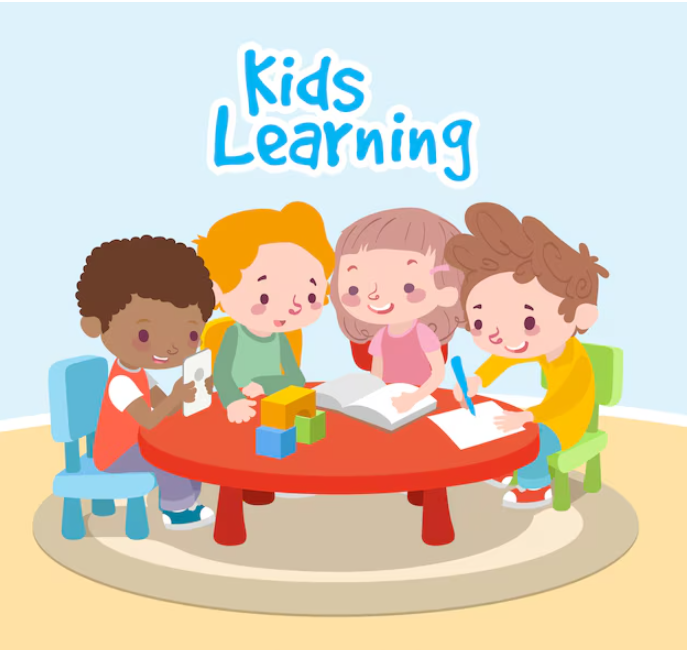Conjunctions – 23 Common Grammar Topics in the Cambridge Starters Exam
Conjunctions are words used to connect words, phrases, or clauses in a sentence. They help ideas flow smoothly, logically and make sentences more coherent. There are three main types of conjunctions: coordinating conjunctions (like and, but, or), which link equal elements; subordinating conjunctions (like because, although, if), which connect a dependent clause to an independent clause; and correlative conjunctions (like either…or, both…and), which come in pairs. By using conjunctions, we can create more complex sentences that express relationships such as cause, contrast, or addition, making our writing clearer and more connected.
Key Points to Remember:
⏩ Coordinating conjunctions link equal elements (words, phrases, clauses).
⏩ Subordinating conjunctions link independent and dependent clauses.
⏩ Correlative conjunctions always appear in pairs.
There are three main types of conjunctions:
1. Coordinating Conjunctions – Liên từ đẳng lập
These conjunctions connect words, phrases, or independent clauses (clauses that can stand alone as sentences) that are of equal importance. The most common coordinating conjunctions can be remembered using the acronym FANBOYS: For (reason); And (addition); Nor (negative addition); But (contrast); Or (choice); Yet (contrast, like “but”); So (result)
✍️ FOR (reason): Used to explain why something happens or to give a reason for an action. It introduces a cause or reason in a sentence. It connects two ideas by showing that the second part explains the reason for the first part.
🍏 He chose apples for their sweetness and nutrition.
🍽️ I cooked pasta for dinner and a salad for lunch.
☕ I bought coffee for waking up early and staying energized throughout the day.
📝 She is studying hard for improving her skills and passing the upcoming exam.
📚 I stayed at home for I had a lot of work to finish today.
🏠 She left early, for she needed to catch the last train home.
🎧 They needed peace, for the noise was unbearable.
✍️ AND (addition): Used to add or join two or more similar elements together in a sentence. The main purpose of “and” is to connect ideas that are related or sequential.
🧃 She bought juice and snacks for the party.
🍰 She loves chocolate and vanilla ice cream equally.
🎶 I enjoy reading books and listening to music in my free time.
🏖️ We went swimming in the ocean and relaxed on the beach all afternoon.
🏖️ We went to the beach, and they decided to go hiking instead.
🚗 We drove to the city, and they took a train to the countryside.
✍️ Nor (negative addition): Nor is a coordinating conjunction used to connect two negative ideas. It’s typically used after a negative clause to introduce another negative element without repeating the word “not” or “no.” It adds something negative to the first negative idea.
🛑 He neither likes cake nor cookies for dessert.
🍔 He doesn’t want burgers nor fries for lunch.
💤 They don’t have much time nor any energy to complete the project today.
🏋️ She doesn’t like working out nor doing yoga in the morning.
🌧️ She doesn’t like swimming, nor does she enjoy hiking in the rain.
🎒 I can’t go hiking, nor can I join the camping trip this weekend.
✍️ But (contrast): Used to show contrast between two ideas, clauses, or phrases. It connects two elements that are different or opposite in some way, often highlighting a difference, limitation, or exception.
⚽ He is strong but slow on the soccer field.
🚴 She is fast but not very careful on her bike.
💼 She is skilled but lacks experience in managing large projects.
🌙 He is confident but sometimes forgets important details during presentations.
🌡️ The sun was shining, but the air was still chilly.
🌧️ It was raining heavily, but they continued their hike.
✍️Or (choice): Is a coordinating conjunction used to present a choice between two or more options. It helps indicate alternatives, showing that only one of the given options is possible or preferred.
🎨 You can choose paint or markers for the art project.
🍕 You can have pizza or a sandwich for lunch.
🎥 We could watch a movie or go to the park this afternoon.
📚 We could study here or go to the library for more peace and quiet.
🍔 You can cook dinner, or I can order takeout for us.
🚶 You could walk to the store, or I can drive you there.
✍️ Yet (contrast, like “but”): Is used to show contrast, much like “but”. It highlights an unexpected outcome or situation that goes against what is expected based on the first part of the sentence. While “but” is more commonly used to express contrast, “yet” often adds a slightly stronger sense of surprise or opposition.
🏃 He runs quickly yet often gets tired easily during long races.
🎭 He is shy yet performs confidently on stage.
🎓 She works hard yet doesn’t seem to improve her test scores much.
🌍 She knows the risks yet is willing to travel to dangerous places.
⏳ The deadline is approaching, yet he has not started the assignment.
🕑 It was already late, yet he decided to start the project.
✍️ So (result): used to show a result or a consequence of something that happened earlier in the sentence. It connects two clauses where the second clause is the outcome or effect of the first clause.
🚲 He missed the bus so he decided to ride his bike to school.
🚗 The car broke down so we called for a tow truck.
📅 I studied all week so I could pass the difficult exam.
🌧️ It started to rain, so we postponed the picnic until tomorrow.
🧳 I saved money so I could go on vacation this summer.
📅 They were running late, so they missed the meeting.
2. Subordinating Conjunctions – Liên từ phụ thuộc
These conjunctions connect an independent clause with a dependent clause (a clause that cannot stand alone). They show a relationship like cause, time, condition, or contrast between the clauses.
Common subordinating conjunctions include: Because (cause); Although (contrast); When (time); If (condition); Since (time/reason)
✍️ Because (cause – vì, nguyên nhân): used to introduce a reason or cause for something. It connects a dependent clause (the cause) to an independent clause (the result).
☕ Because the coffee shop was closed, we went to another place to get our morning drinks and snacks.
🕒 They postponed the meeting because the manager was unavailable, and now it will take place later this afternoon.
✍️ Although (contrast – mặc dù, tương phản): used to introduce a contrast or contradiction between two ideas. It means “despite the fact that” or “even though.” It connects a dependent clause (the part that starts with “although”) to an independent clause. The two ideas presented may seem opposite or surprising when placed together.
☔ Although it was raining heavily, they decided to continue their outdoor picnic and enjoy the afternoon together.
🏃 They finished the marathon, although they were exhausted and had barely any energy left to run the final miles.
✍️ When (time – khi, thời gian): used to indicate time. It connects two clauses, showing that one event happens at the same time or around the same time as another event. It can refer to a specific point in time or a period during which something happens.
⏰ When the alarm rang, she quickly got out of bed and started her morning routine for the day.
🎥 They were watching a movie when the power suddenly went out, leaving the entire house in darkness.
✍️ If (condition – nếu, điều kiện): used to introduce a condition. It indicates that one event or action depends on the occurrence of another event or action. In other words, something will happen only under certain circumstances.
🌧️ If it rains tomorrow, we will stay home and watch a movie instead of going out.
🏕️ We will arrange a barbecue if the weather stays pleasant and everyone can bring some food to share.
✍️ Since (time/reason – kể từ khi, lý do):
When used to refer to time, “since” indicates the starting point of an action or event that continues into the present.
⏳ Since I graduated from college, I have been working at the same company for five years.
🕒 She has been very busy with work since she started her new job in the city.
When used to indicate reason, “since” means “because” and explains the cause of something.
🌡️ Since it was extremely hot outside, we decided to stay indoors and enjoy a cool drink together.
🎓 They were thrilled to graduate, since they had worked hard for many years to achieve their academic goals.
3. Correlative Conjunctions – Liên từ tương liên
These come in pairs and work together to link equal elements in a sentence.
Common pairs include: Either…or (hoặc…hoặc); Neither…nor (không…cũng không); Both…and (cả…và); Not only…but also (không những…mà còn)
✍️ Either…or: is used to present two options or choices. It indicates that only one of the two options can be true or will happen, but not both. It emphasizes a decision or selection between alternatives.
🎬 Either we watch a movie tonight, or we can go out for dinner, but we can’t do both.
🏕️ You can either join the camping trip or stay home if you prefer a quiet weekend.
✍️ Neither…nor: is used to connect two negative ideas. It means “not this and not that.” The structure emphasizes that neither of the two options or situations is true or possible.
🍕 Neither my brother nor my sister wanted pizza for dinner, so we had to order something else.
🏃 She could neither run fast nor jump high, but she tried her best during the competition.
✍️ Both…and: is used to link two related ideas or elements, indicating that both are included. It emphasizes that two things are true or are happening at the same time. This conjunction pairs two elements that are of equal importance, whether they are words, phrases, or clauses.
🎒 Both Anna and John packed their bags for the camping trip tomorrow morning.
🍽️ We will have both spaghetti for dinner and ice cream for dessert after the meal.
✈️ Both they missed their flight, and they lost their luggage on the same day of the trip.
✍️ Not only…but also: is used to emphasize two related facts or actions. It introduces two elements that are both true, with the second one often being more surprising or important. It helps highlight the relationship between the two points, showing that not just one but both are noteworthy.
🎸 He is not only a talented guitarist but also a great singer in the band.
🏆 Not only does she excel in academics, but also she wins many sports competitions.
🎓 He is not only studying hard for his exams but also preparing for his college applications.
🎨 Not only did she paint a beautiful picture, but also she designed the entire exhibition.
✈️ We will not only visit the museum tomorrow, but also take a flight to another city.
🏡 Not only did they renovate the house, but also they improved the garden and backyard entirely.




